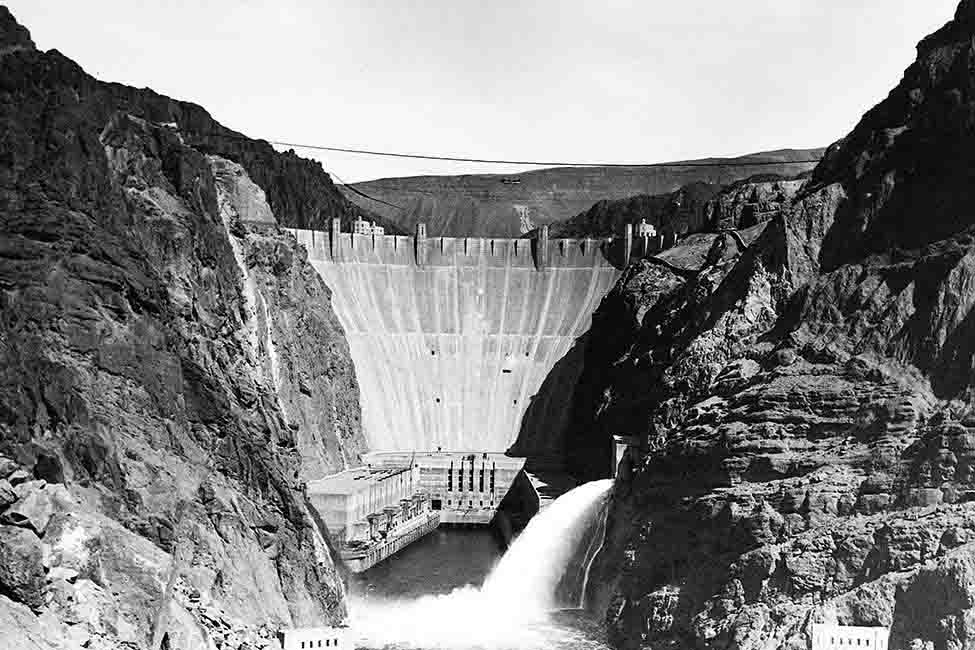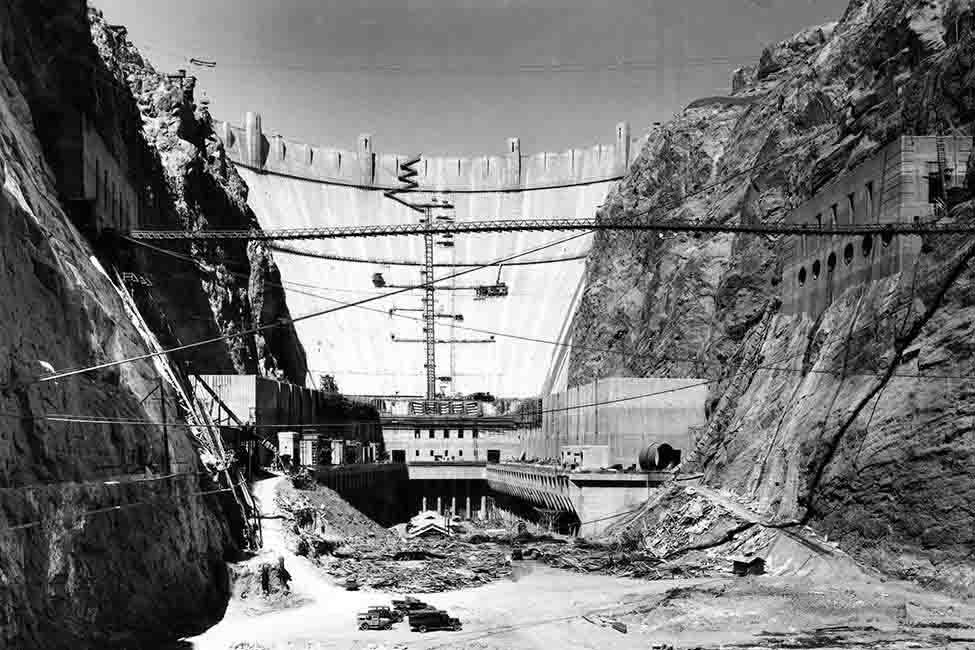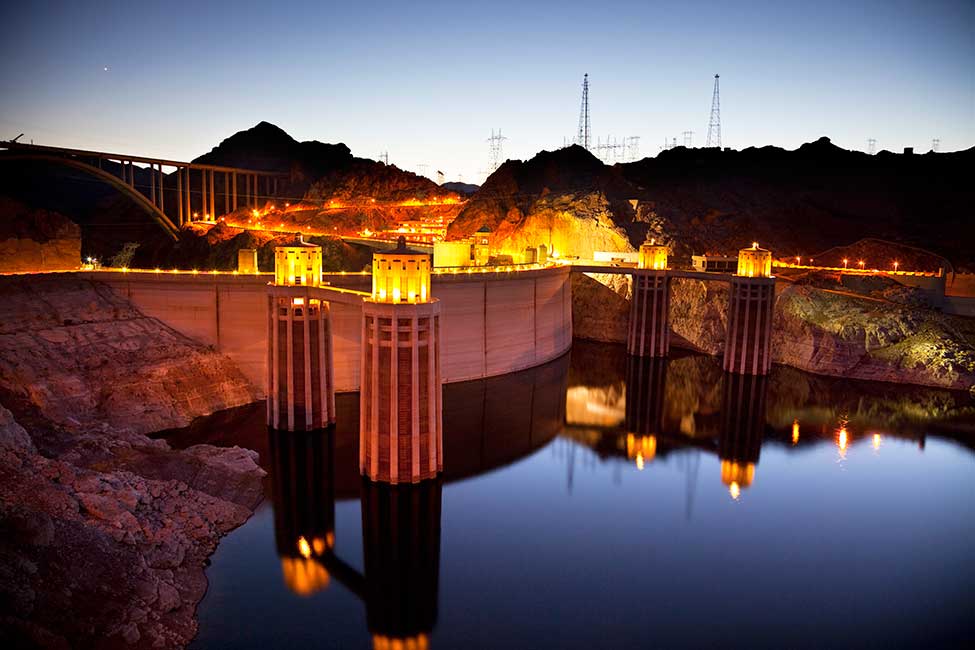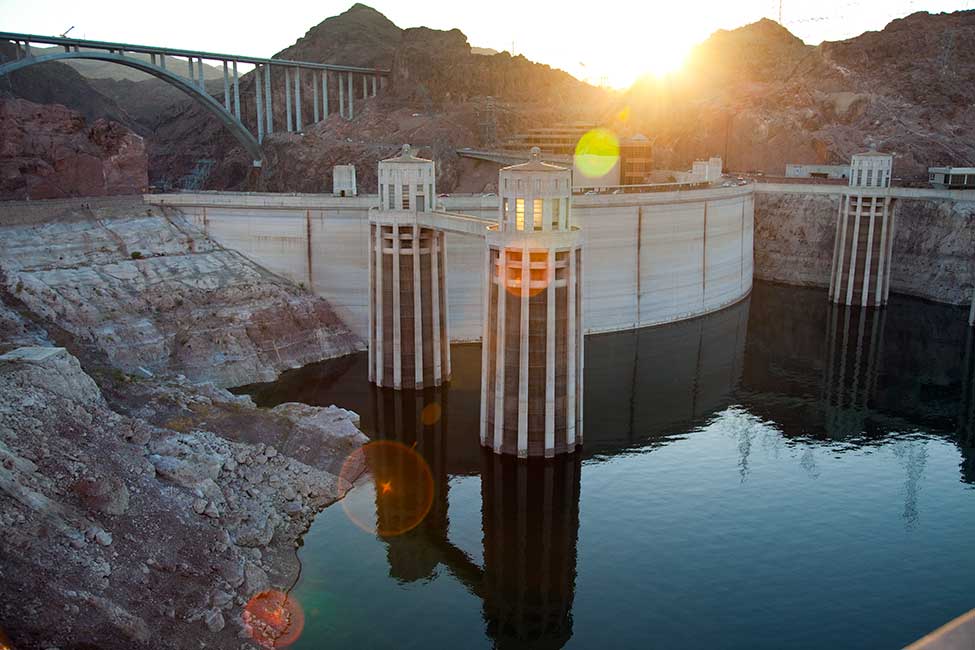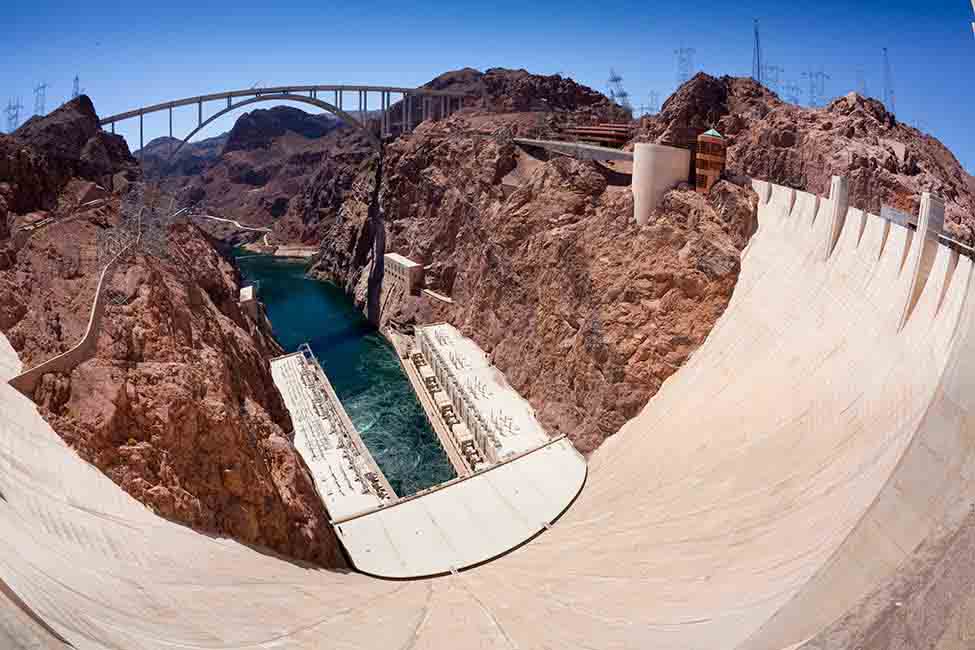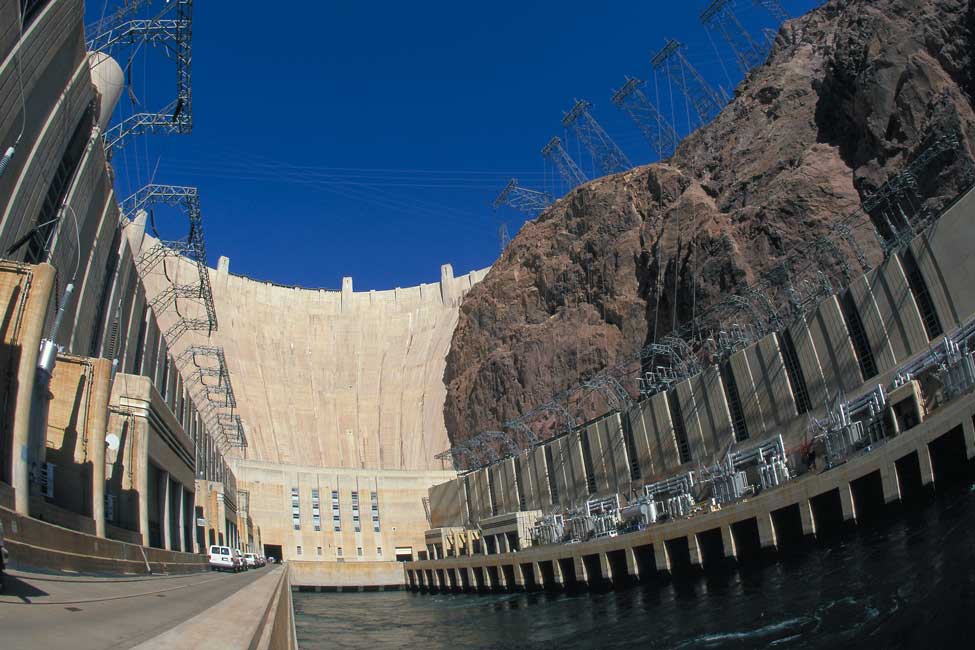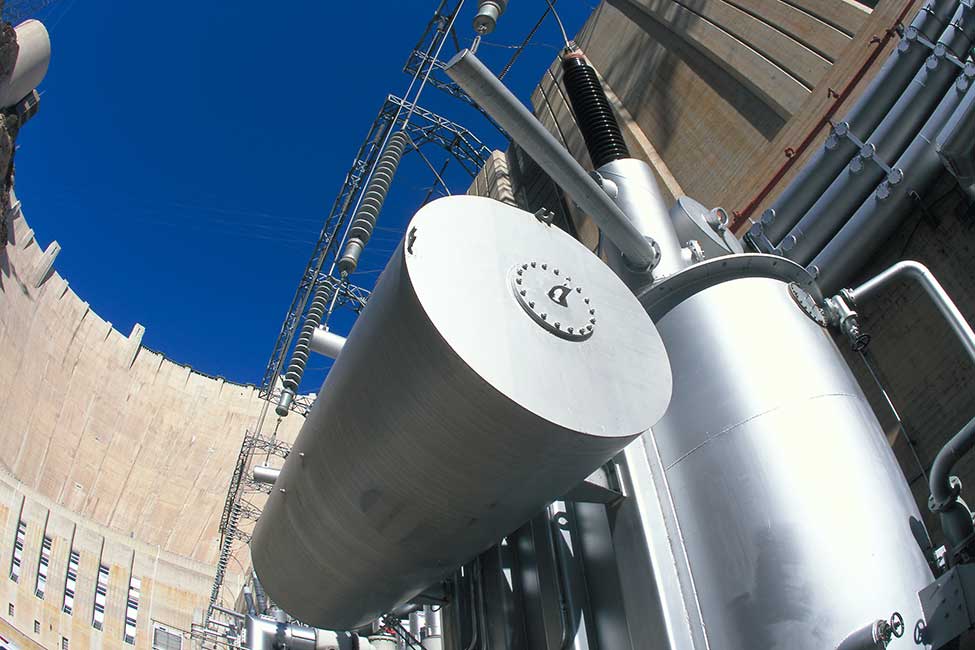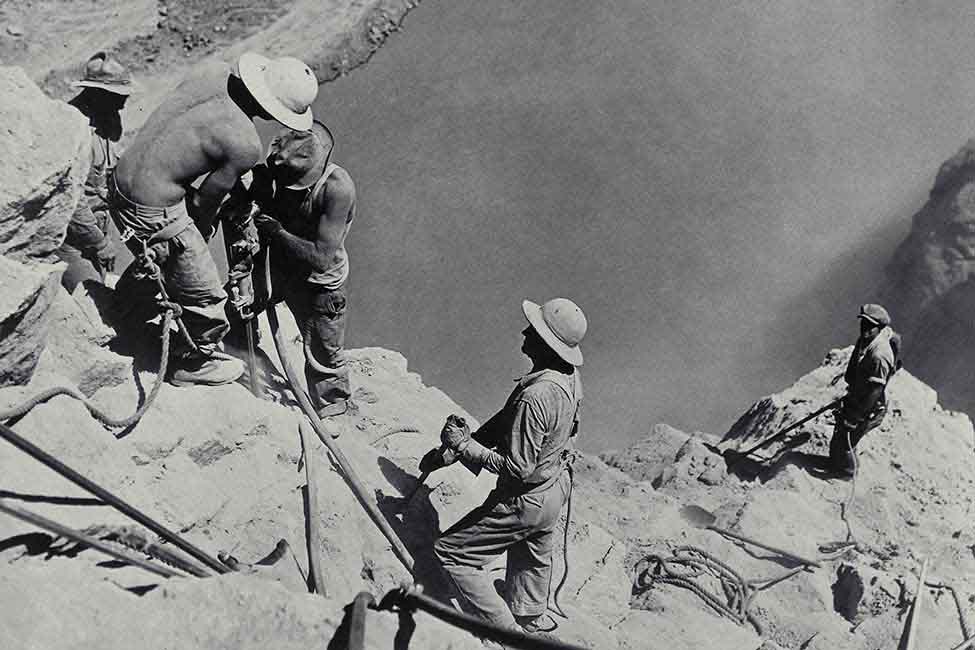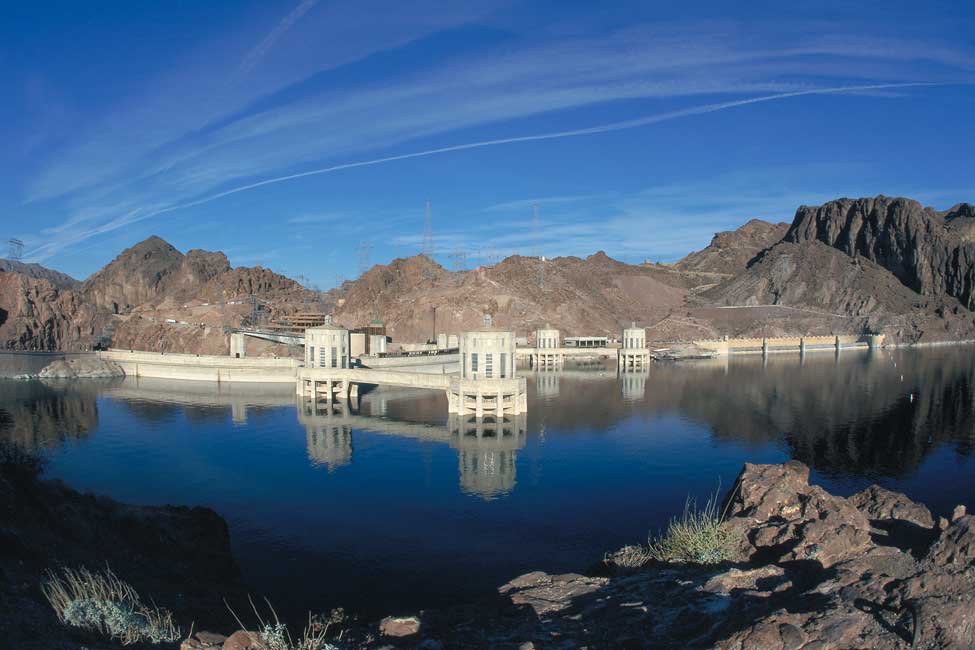Hoover Dam was an audacious and courageous undertaking. Built during the Great Depression, the dam would tame the flood-prone Colorado River southeast of Las Vegas―protecting cities and farms, generating cheap electricity to supply power to homes and industry, and providing work for thousands who desperately needed jobs.
A consortium called Six Companies Inc., which included Bechtel, won the right to build the concrete arch dam, at a cost of nearly $49 million—a staggering amount in the early 1930s (roughly equivalent to $860 million today). Skeptics thought it couldn’t be done. Others were convinced that the contractors would go bust. But the men of Six Companies boldly moved forward, drawing on their considerable, collective knowledge and experience, managing huge risks, and pioneering as they went.
Bechtel founder Warren Bechtel and his son Steve were key leaders of the consortium, and their contributions to the project amounted to a blueprint for how their company, Bechtel, would approach huge, difficult, complex projects to come. Six Companies finished the dam in five years, two years ahead of schedule and under budget, giving company leaders the confidence that they could take on any project, anytime, anywhere.
"There’s no question that it was a stepping stone for us. The Hoover Dam project and our role in it was a major platform for advancing to other bigger projects since then."
Steve Bechtel Jr.
Today, Hoover Dam is a top tourist attraction—more than a million visitors each year and take tours offered by the U.S. Bureau of Reclamation. What they see is one of the wonders of the modern industrial world. What they know is that this gigantic concrete structure is more than just a dam. It’s a symbol of the human spirit, a project that came around when the country needed it most.


